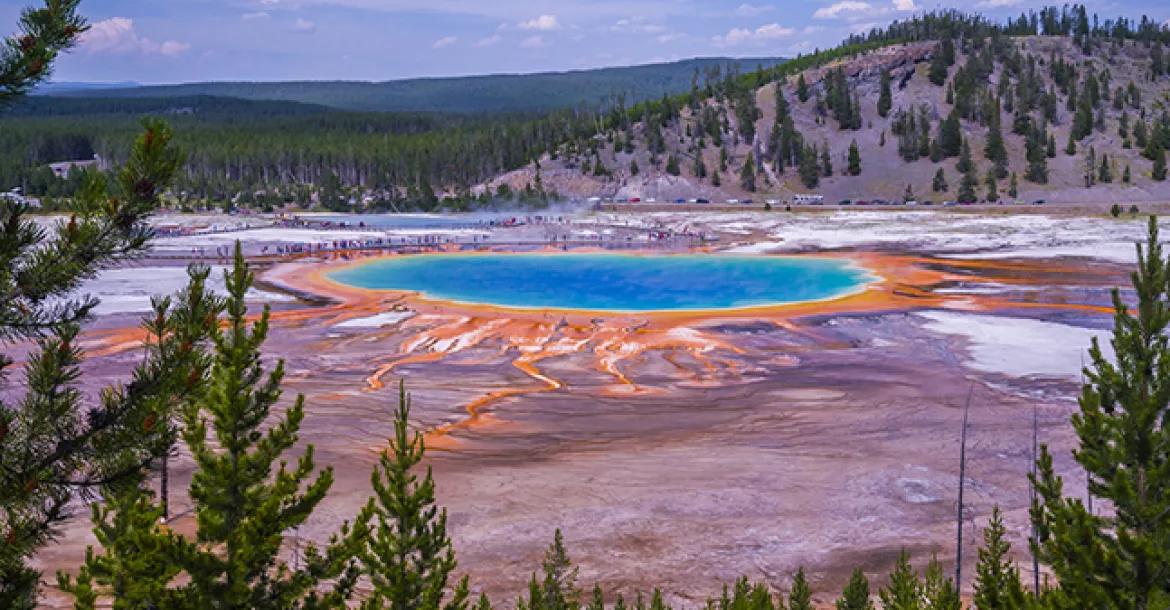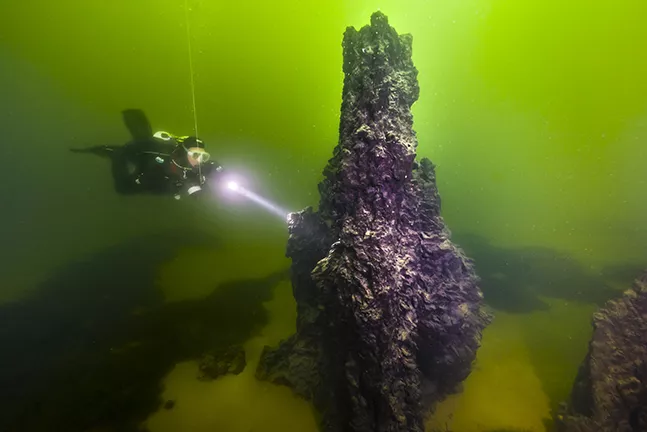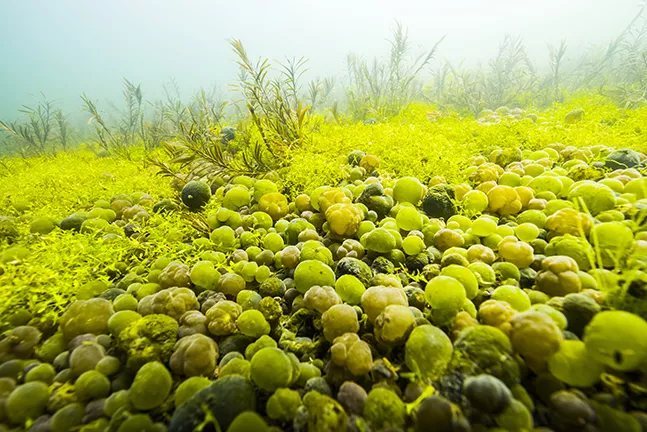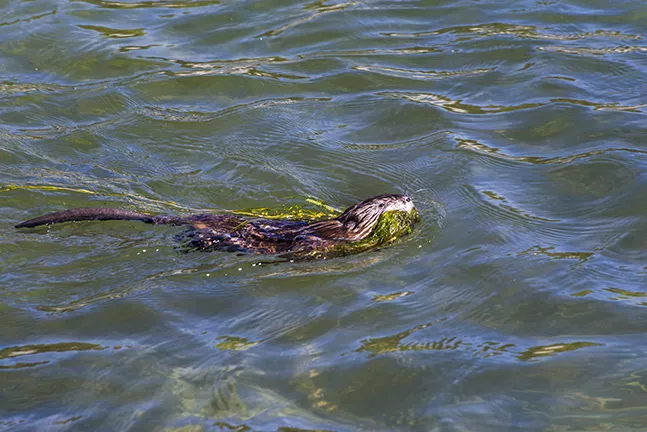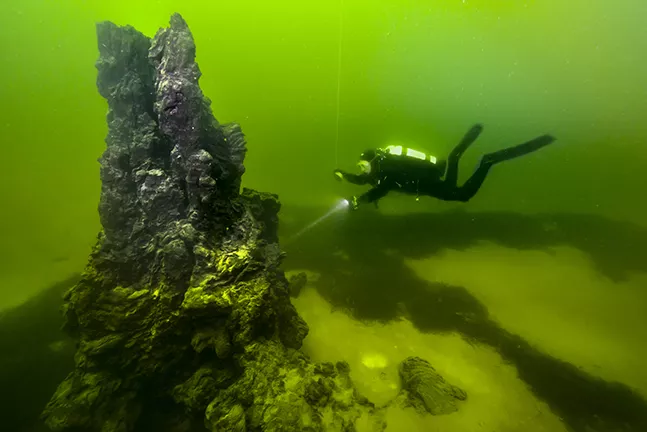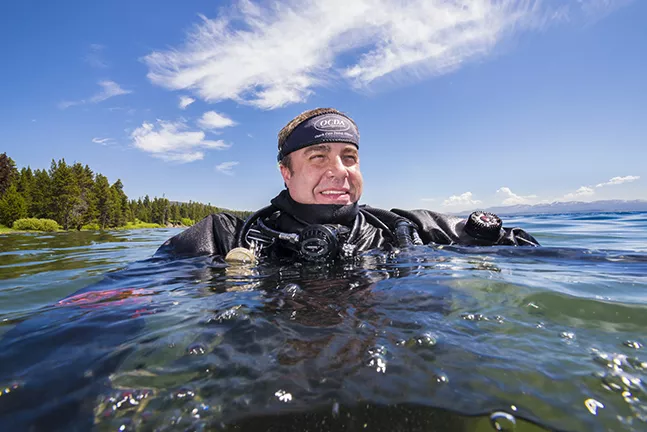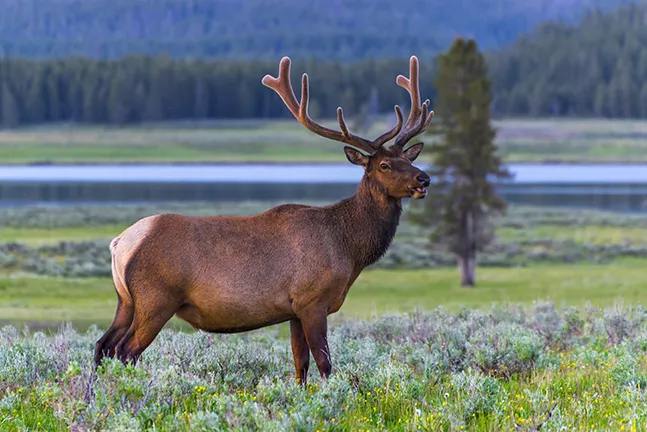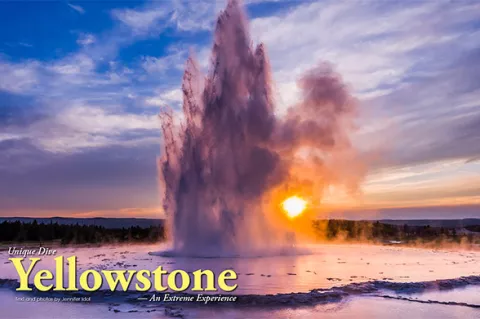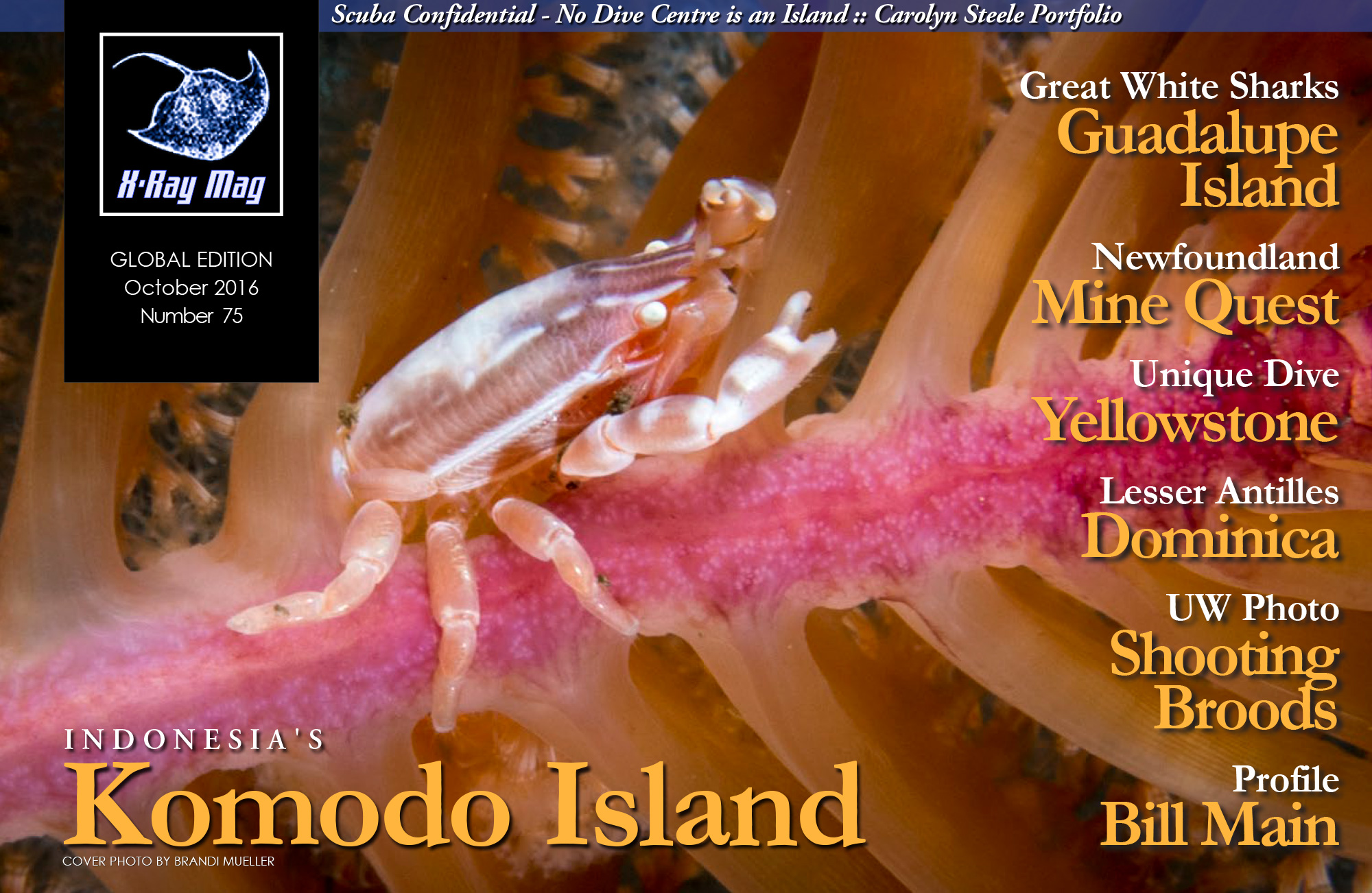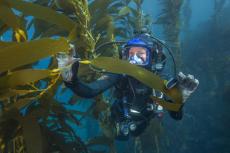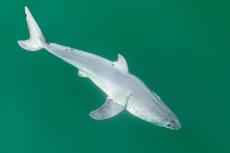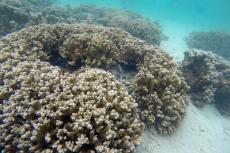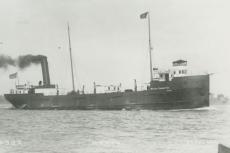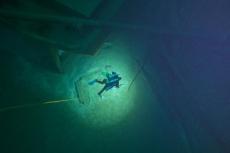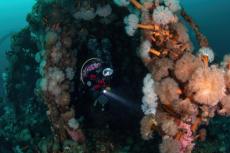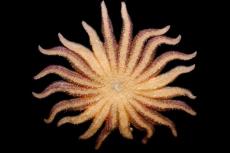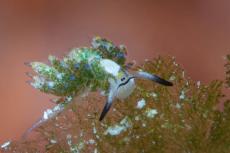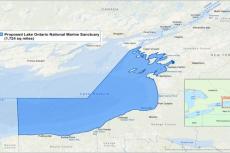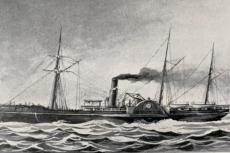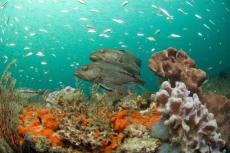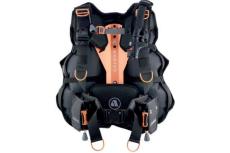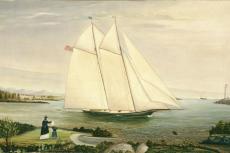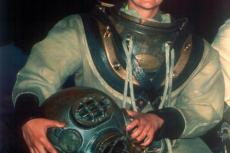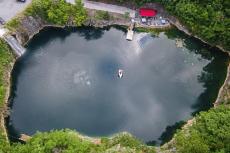A volcano larger than Delaware and Rhode Island combined, Yellowstone National Park is a geothermal hot spot that attracts more than four million visitors a year. Wildlife roam the landscape freely in this caldera defined by ongoing thermal activity. In this unique landscape, opportunities for exploration above and below the water line abound.
Contributed by
Factfile
Jennifer Idol is the first woman to dive 50 states and author of An American Immersion.
She’s earned more than 27 certifications and has been diving for 20 years.
Her underwater photography and articles are widely published. A native Texan, she creates design and photography for her company, The Underwater Designer.
Visit uwDesigner.com to see more of her work.
TIPS FOR THE ADVENTURER:
• Save money and experience two parks by purchasing an annual parks pass.
• Bring a light jacket in the summer and heavy winter clothes outside summer.
• Make lodging reservations one year in advance.
• The nearest SCUBA shop is Yellowstone Divers. Advance notice is needed for equipment and may need to be rented from shops in Salt Lake City or Denver. Bringing all equipment is highly recommended.
REFERENCES
Yellowstone National Park. National Park Services. http://www.nps.gov/yell
Yellowstone National Park is a remote wilderness. The closest major airports are six to eight hours away by car in Salt Lake City, Utah and Denver, Colorado. I started the 24-hour drive from Texas at dawn with my buddy Doug Harder. We watched as flat plains in the Texas panhandle gave way to the Rocky Mountains in Colorado. We completed our drive the first day as the moon rose and continued our journey the next day.
On the second day of driving, we looked left as we neared Yellowstone and noted the Grand Teton Mountains towering over Jackson Hole Valley, an impressive destination. We finally reached the south entrance, an hour north of Grand Teton National Park. Entering the park feels like reaching the edge of Texas and having hours of driving ahead before reaching the final destination. (Distances are vast in Yellowstone.)
Slow speed limits protect people and wildlife. Either may jump out from the forest at any moment. I booked my tent site at Bridge Bay Campground, another hour from the south entrance. We headed west past the impressive Lewis Lake and then north along Yellowstone Lake, the largest lake at high elevation in North America. West Thumb Geyser Basin hurled steam into the air on the southern side of the lake.
Yellowstone is one of the world’s largest calderas. It feels flat and strange compared to the surrounding landscape. The last eruption destroyed the mountains in the center and only left mountains at the park’s perimeter. Nonetheless, the lowest point in elevation is 1,610 meters (5,282 feet) and our dive would be conducted at 2,357 meters (7,733 feet).
A storied history
Evidence from archaeological sites shows that people have inhabited the area for more than 11,000 years. When Europeans first visited the region in the 1800s, they were so moved by the proliferation of life that they called it "Wonderland".
Individual ideas and actions make a powerful difference for the world around us, as seen in the history of people’s appreciation for Yellowstone National Park. It is the world’s first national park, established on 1 March 1872. More than 100 nations have since created an estimated 1,200 national parks or equivalent reserves. This beginning of park development led to other parks in the United States, which then led to the creation of the National Park Service on 25 August 1916. We celebrate the centennial of our national parks this year because Yellowstone National Park was deemed an area worth protecting from development and misuse, and this led to the protection of other important resources.
Yellowstone has also been designated a UNESCO World Heritage Site and a biosphere reserve. This means that Yellowstone is part of a network of reserves devoted to the conservation of nature and scientific research, and is part of a select list of globally protected areas whose natural and cultural resources benefit all people.
Too hot to touch
The geysers and thermal features throughout the park are the most visible reason for a storied history of fascination with this wilderness. More than half the world’s geysers and 10,000 thermal features are found in this world of extremes. Water temperatures range from 459°F in Norris Geyser Basin to the cold waters of Yellowstone Lake at 5°C (41°F). This makes the world’s first National Park an unlikely destination for diving, yet I return annually.
Since thermal features are dangerous and often reach temperatures above boiling point, swimming is limited to Firehole Canyon near Madison Junction. Most injuries and deaths in the park occur at the thermal areas. Every year I visit the park, I read the park news and notices. The park issues alerts for areas currently closed to the public and new rules. This year, five notable incidents in the park became national news.
The first incident involved a visitor who died after straying off the protected boardwalk and falling through thin crust into a hot spring in Norris Geyser Basin, the hottest thermally active area. Although the landscape looks solid, it is a wild and unpredictable land. Even scientists and park rangers who study the area cannot predict which areas are solid ground and which are fragile crust.
Additionally, between 1,000 and 3,000 earthquakes shake Yellowstone and change geyser behavior every year. Old Faithful is named for its predictable eruptions. Seismic activity has changed the eruption cycle, so the interval between eruptions seems to be increasing. Predicted geyser times are listed at the visitor center in the Old Faithful lodge area. Each lists the expected time of eruption, plus or minus time when the geyser may possibly erupt.
The second most recognized feature, the Grand Prismatic Spring, also experienced two incidents. Fortunately, no one was hurt in either. However, a group of amateur videographers, who wanted to share their adventure through social medla, left the boardwalk and irreparably damaged the bacterial mats that provide the color surrounding the spring. Leaving the boardwalk can result in a US$1,000 fine.
The spring features unreal colors. The bacteria that form the colors around the pool display colors depending on the temperature in which they grow. Another unfortunate incident may change those colors over time. A drone flew across the spring and lost contact, falling into the center of the spring. Anything that falls into a thermal feature is irretrievable due to the extreme temperatures. Objects in springs block the flow of water and cool their temperatures, causing man-made changes. It is a felony offense to fly drones in any of the United States' National Parks.
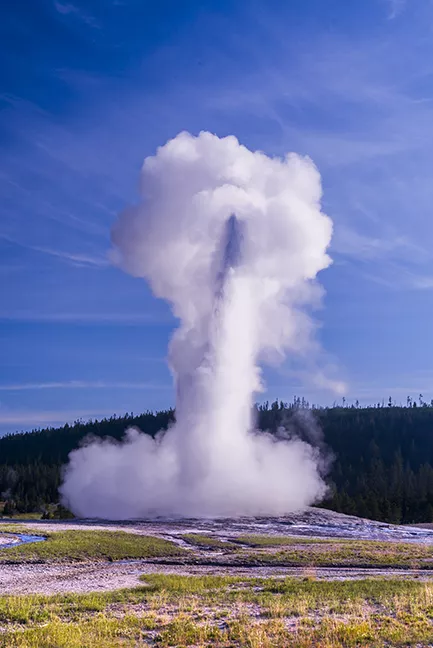
Defined by water
From geysers and springs to lakes and rivers, Yellowstone National Park is defined by water. Glaciers from the last two million years and up to 14,000 years ago shaped Yellowstone Lake. Yellowstone River flows from Yellowstone Lake through Hayden Valley and carved the Grand Canyon of Yellowstone. Upper and Lower Falls are two of more than 290 waterfalls in the park, and are the most impressive. Lower Falls descends 94 meters (308 feet) into the canyon.
I dive Yellowstone Lake to explore the siliceous spires in Bridge Bay, an unusual feature created after the last glacial retreat that rises up to 20 feet from the bottom. They look like solidified smoke that squeezed through a chimney. The delicate spires are thought to have formed while underwater and are surrounded by bacterial mats.
Diving in special bodies of water like Yellowstone Lake is an adventure. Yellowstone Lake reaches a maximum depth of 131 meters (430 feet), so it can accommodate any dive plan imagined. I usually plan shore dives, but it is possible to rent a boat from Bridge Bay Marina. Although this is a cold-water dive at altitude, I enjoy the good visibility and exploration. The lake is enormous and makes me feel like a piece of straw in a hayfield.
Few visitors experience the park’s underwater resources and because of this, the lake can reveal surprising finds. I observed round balls of algae which I confirmed were nostoc algae balls known as cyanobacteria. They are reported to be successful nitrogen and carbon fixers. Yellowstone Lake is also home to the largest population of wild cutthroat trout in North America, which can be seen returning to spawn in the lake mid-summer as they jump over the LeHardys Rapids on the northern side.
Diving activities are bound by regulations specific to individual bodies of water. Each National Park follows independent diving guidelines. Diving with a dive flag is mandatory in Yellowstone. Park rangers require divers to check in at the Bridge Bay Marina station before and after their dives. They are helpful and there is a useful topographic map of the lake hanging in the office. No solo diving is allowed and all divers must be certified.
The wild side
Wildlife thrive in the park because of their access to fresh water. Bison congregate around thermal features in winter to keep warm. A keen eye is pertinent to finding wildlife. In the summer, another good indicator is coming across parking areas full with cars. A bison, elk or grizzly bear has likely been spotted and visitors linger to catch glimpses and take photos of these encounters.
It may feel as if the wildlife is tame because of their close proximity, but they are not. Each animal requires its own personal space and the law requires people to stay 91 meters (300 feet) away from bears and wolves, and 23 meters (75 feet) away from all other animals including elk and bison.
An extreme experience
Impossible life persists in the heat of springs and geysers, providing almost unnaturally saturated colors. Fish and other aquatic species inhabit frigid waters in Yellowstone Lake, and all animals must survive the serious winter conditions. I am awestruck by the diversity in this landscape and dwarfed by its scale and complexity. ■

